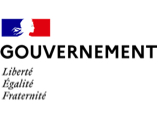Digital healthcare in Germany
Key figures
83M
inhabitants
2nd
global MedTech player
13,1%
of healthcare expenditure in GDP in 2020
Decision-making powers shared between the 16 "Länder", the federal government and legal professional organizations
The federal government proposes draft laws, regulations and administrative provisions, and the Länder are responsible for implementing them.
The healthcare system is financed by a compulsory insurance system that is 87.7% public and 10.5% private, organized around public health insurance funds. Doctors bill health insurance funds directly, not patients.
Meeting the ambassadors

Matthias Mieves, Member of the German Parliament (Bundestag)
Germany is second only to the USA in the medical technology industry
Germany is one of the pioneering countries to have paved the way for early access to reimbursement for digital health apps. The innovative so-called "fast-track" procedure allows doctors to prescribe certain categories of digital health apps identified as "DiGA" ( Digitale Gesundheitsanwendungen ), pending evidence demonstrating a positive effect.
The evaluation of these applications has been assigned to the Federal Institute for Drugs and Medical Devices(BfArM).
By 2025, insured persons should have an electronic medical record - (ePA). A central data access and coordination service will also be set up to enable access to healthcare data from different sources. For more information on Germany's digital health policy, click here.
How do you access the German market?
1. Connect with hubs and benefit from support and innovation initiatives
Digital healthcare in Germany is developing thanks to a system of innovation hubs that bring together and facilitate the incubation of new healthcare technologies.
The "Digital ecosystems" list several German digital innovation "hubs". The digital health hubs are:
- Zollhof, Nürnberg hub: specializing in the development of business models for digital health, connected objects and artificial intelligence
- 5-HT, Mannheim/Ludwigshafen hub: specializing in the digital transformation of the German healthcare system
- Medical Valley, Erlangen hub: specializing in the development of innovations that meet the challenges of today and tomorrow . It provides its Medical Valley GmbH platform, which markets its companies' products and offers advice to help them access the German market . It also offers the Dmac (Digital Medical Application Center), which supports innovators in the development of their projects.
2. Obtain reimbursement from regional health insurance funds
The preconditions for this gateway to the German market remain the required possession of the CE mark, sufficient for a product to be put into circulation in Germany, and the declaration of the putting into circulation of a medical device to the BfArM, in order to receive reimbursement .
The German insurance system is decentralized. There are 95 public and 42 private health insurance funds. The two funds with the largest number of policyholders are TK and Barmer. Health insurance companies choose which products they accept for reimbursement in addition tothose that have been validated by BfArM. They often have their own innovation hubs. This is the case of TK's innovation portal, which offers support for innovation.
3. Market authorization from BfArM (Federal Institute for Drugs and Medical Devices)
The BfArMis the federal authority in charge of health technology assessment. It issues marketing permits for various finished medical products.
To gain access to reimbursement, a clinical study proving the therapeutic and economic efficacy of one's product on the German market is required. This test period lasts an average of 18 months, during which time it is possible to find intermediate reimbursement from the regions if doctors apply.The support of healthcare professionals and health insurance funds thus makes it easier to obtain a license from BfArM.
For entrepreneurs developing and marketing e-health applications, BfArM offers an accelerated evaluation procedure enabling faster market access called DiGA.
To be registered in the directory of reimbursable digital health applications (DiGA directory), you can follow an accelerated procedure:
- You submit your application here declaring the product's quality, effectiveness and impact on the German healthcare system
- In the event of a favorable BfArM assessment, your healthcare solution is included in the public DiGA directory.
- Patients will be able to benefit from DiGA in the presence of a prescription or medical proof
To find out more, click here
4. Obtaining reimbursement from the statutory health insurance fund (GKV) with the Joint Federal Committee (G-BA)
The G-BA is a public legal entity comprising the 4 main coordinating organizations of the German autonomous healthcare system:
- The national associations of public health insurance physicians;
- The German Hospital Federation;
- The Central Federal Association of Health Insurance Funds and the national associations of public health insurance dentists .
The G-BA defines the specific healthcare services that are covered by compulsory health insurance (GKV). It is also responsible for funding projects on new forms of healthcare delivery and research. The G-BA Innovation Committee defines priorities and funding criteria for projects.
Government authorities and platforms
They are the guarantors of smooth operation and cooperation in the healthcare system
.The associations
They bring companies together and facilitate their incubation
.Innovation support initiatives
They bring together and facilitate the incubation of new technologies
.Training
Universities and their groups train and support digital health innovations
Exporting internationally - Why not Germany?


